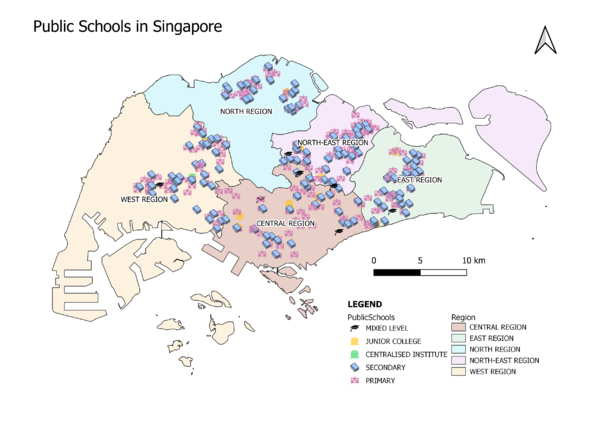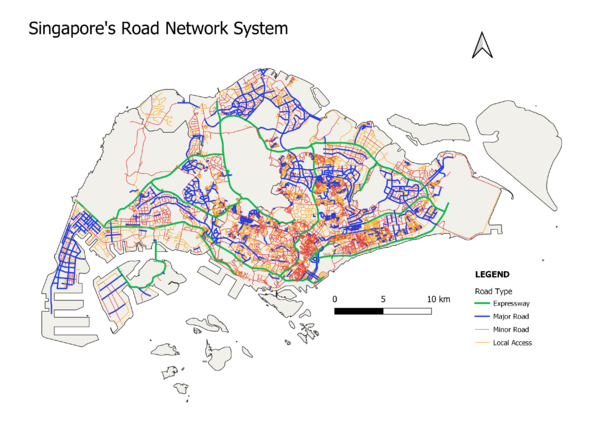Difference between revisions of "SMT201 AY2019-20G1 Ex1 Kang Hui Yun"
| Line 3: | Line 3: | ||
=== Public Schools === | === Public Schools === | ||
| − | [[File:Public Schools.png|border| | + | [[File:Public Schools.png|border|600px|center]] |
| Line 10: | Line 10: | ||
=== Road Network System === | === Road Network System === | ||
| − | [[File:Road Network System Kang Hui Yun.png|border| | + | [[File:Road Network System Kang Hui Yun.png|border|600px|center]] |
| − | The map above depicts the hierarchy of Singapore's road network, classified into 4 different categories—expressway, major road, minor road and local access. | + | |
| + | The map above depicts the hierarchy of Singapore's road network, classified into 4 different categories—expressway, major road, minor road and local access. Each category is given a different colour. Also they are given a different stroke width, with expressway having the thickest stroke, then major, minor and local access roads, as it brings out the more important roads in the viewer's eyes before the rest. It is also true that there are fewer expressways than major roads, fewer major roads than minor roads, etc, which makes sense for the visualisation. | ||
=== 2014 Master Plan Land Use === | === 2014 Master Plan Land Use === | ||
| + | |||
| + | [[File:2014 Master Plan Land Use.png|border|600px|center]] | ||
| + | |||
| + | |||
| + | The above map shows the different types of land use in Singapore. As the data contains a whopping 32 categories, the data is aggregated to combine similar categories into one, leaving us with 21 categories in total. This allows for better visualisation as there are 11 less colours the map readers have to take in, while still being able to understand the nature of the land use for each area. | ||
== Part 2: Choropleth Mapping == | == Part 2: Choropleth Mapping == | ||
Revision as of 15:30, 15 September 2019
Contents
Part 1: Thematic Mapping
Public Schools
The map above shows the distribution of public education institutions, classified into distinct school levels—mixed level, junior colleges, centralised institutes, secondary and primary. Considering the overall presentation, the coastal map outline is given a light (green) colour for better visualisation. As there are many features (i.e. public schools) and classes (i.e. school levels), the visual variables gets cluttered when viewing the whole map. Hence, a different colour and SVG is used to represent each school type so as to help map readers distinguish among the clusters easily.
Road Network System
The map above depicts the hierarchy of Singapore's road network, classified into 4 different categories—expressway, major road, minor road and local access. Each category is given a different colour. Also they are given a different stroke width, with expressway having the thickest stroke, then major, minor and local access roads, as it brings out the more important roads in the viewer's eyes before the rest. It is also true that there are fewer expressways than major roads, fewer major roads than minor roads, etc, which makes sense for the visualisation.
2014 Master Plan Land Use
The above map shows the different types of land use in Singapore. As the data contains a whopping 32 categories, the data is aggregated to combine similar categories into one, leaving us with 21 categories in total. This allows for better visualisation as there are 11 less colours the map readers have to take in, while still being able to understand the nature of the land use for each area.


